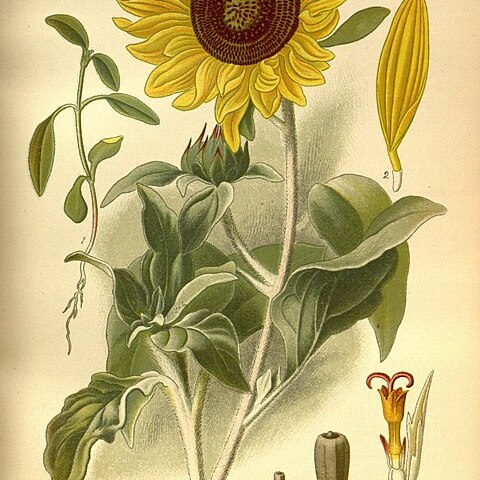Annual herb up to c. 4 m tall, stems usually solitary, silky-silvery villous at least in the upper part. Leaves opposite or alternate below, alternate above, lamina up to c. 12 x 6 cm, ovate, apex acuminate, base broadly cuneate or cordate in the lower leaves, silky-silvery villous on both surfaces, petiole up to c. 4 cm long. Heads solitary and terminal, about 8 cm across the expanded rays. Involucral bracts triseriate, ovate, abruptly acuminate, silvery silky-villous. Rays yellow, disc blackish. Achenes c. 5 mm long, oblong-obovate, somewhat compressed, thinly hispid on the margins and at the apex. Pappus of 2 small narrow scales, soon caducous.


